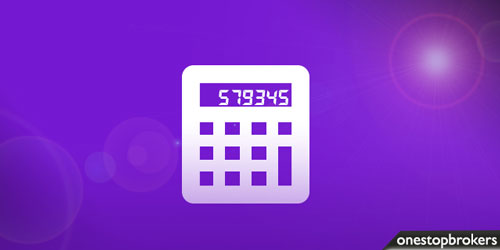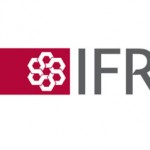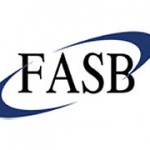A look on FASB’s new standards

In December 2002, five months after he became chairman of the Financial Accounting Standards Board, Robert Herz told a conference of auditors that FASB had set a “very ambitious” deadline for issuing a sweeping new standard that would govern how companies report revenues. The board had established a two-year timetable in June of that year, said Herz, with the goal of developing “a coherent, conceptually consistent model for revenue recognition that would replace much of the existing literature.”
That looked to be an ambitious goal indeed. Thousands of pages on how to recognize sales had piled up over the previous 40 years. (More than 200 pronouncements have been issued ad hoc by various industries, the auditing profession, the Securities and Exchange Commission, and FASB itself, according to a still widely quoted 2005 estimate by the board.)
Today, Herz, who was FASB chairman until 2010, acknowledges that his characterization of the original deadline was an understatement. What led the board to set such an unrealistic agenda for itself? “That was the point of the highest focus on financial reporting in the history of our country,” recalls Herz, now an executive-in-residence at the Columbia Business School and a member of a number of boards and audit committees. Responding to the then-recent wave of accounting scandals and discussions about the soon-to-be signed Sarbanes-Oxley Act, Congress and the SEC were pressuring FASB to quicken what critics saw as its “glacial” pace of standard setting.
Further, the dot-com bubble had recently burst. Part of the reason for the demise of so many start-ups, many experts said, was their propensity to manufacture revenue via the use of non-GAAP measurements and so-called pro forma accounting. In FASB’s view, improper revenue recognition was thus the biggest source of financial reporting fraud. “You get the biggest bang for the buck in doing a fraud with revenue,” says Herz. “The pumping up of the top line flows 100 percent through to profit.”
Yet even as the SEC was pushing FASB to get a move on with its standards, its chairman, Harvey Pitt, was espousing the need for a convergence of standard setting between FASB and the International Accounting Standards Board. In the event, melding FASB’s grab-bag of prescriptive rules with the IASB’s slim set of principles for reporting revenue proved to be a long, arduous process, and the original timetable of 2 years eventually lengthened to 12.
Today, at last, the boards apparently are on the verge of issuing their final standard, Revenue from Contracts with Customers. For many corporations it will be, as Herz calls it, “a big deal.”
No Time to Lose
That could be another understatement. Although many companies won’t have to change the way they report sales under the proposed standard, others will have to alter their accounting systems to fit the new model. And because the model is based on broad principles rather than narrow rules, finance executives and corporate accountants will have to use their judgment much more than they’ve ever had to before. (The following discussion assumes that the standard will be enacted for the most part in its current proposed form.)
Fortunately, finance and accounting staffs working for companies that apply U.S. generally accepted accounting principles will have a fair amount of time to prepare if all goes as planned. While FASB expects to issue the standard in the first half of the second quarter of 2014, it would go into effect for public companies that have annual reporting periods beginning after December 15, 2016, and for private companies with annual reporting periods starting after December 15, 2017.
Thus, for example, a public company with a reporting year beginning December 31, 2016, would have to recognize revenue according to the new standard on its quarterly statements starting with the first quarter of 2017, and on its 2017 10-K. Nonpublic companies that have the same year-end as public companies would begin the process one year later.
Despite the nearly three-year lag between now and the starter’s pistol, though, companies would do well to start their compliance processes now. Says an October 2013 FASB update on the revenue recognition project: “The Boards noted that the period of time from the expected issuance of the standard until its effective date is longer than usual. However, in this case the Boards decided that a delayed effective date is appropriate because of the unique attributes of the Revenue Recognition project, including the scope of entities that will be affected and the potentially significant effect that a change in revenue recognition has on other financial statement line items.”
In other words, the changes will be so extensive that companies with complex revenue programs will need all that time to absorb them.
A Five-Step Process
At the heart of the proposed standard is a five-step process that will demand far deeper analyses than most companies are used to. To recognize revenue, a seller operating under a written, oral, or implied contract to provide goods or services to a customer will be required to (1) identify the contract with a customer, (2) identify the separate performance obligations in the contract, (3) determine the transaction price, (4) allocate the transaction price to the separate performance obligations in the contract, and (5) recognize revenue when or as it satisfies a performance obligation.
While complicated supply chains may tax the ability of certain poorly organized firms to identify the specific seller in a contract, the first step shouldn’t be too hard for most companies. But problems may arise when even a vendor with just a single customer has to identify more than one performance obligation, which the proposed standard defines as “a promise in a contract with a customer to transfer a good or service to the customer.”
If the contract, for instance, includes licensing and support for the customer as well as the sale of a product, the new model will complicate matters for certain sellers, according to George Victor, a partner with Giambalvo, Stalzer, a Great River, New York–based accounting firm. Unlike the current situation, each of those elements in many cases would have to be identified and valued under the standard—broken out rather than bundled.
Similarly, the proposed requirement of gauging the transaction price creates at least one new complication: vendors will have to estimate uncollectible receivables at the start of the contract. Under current accounting, companies that don’t believe they’re going to collect on a receivable can simply not record the revenue, according to Victor.
At the same time, if vendors expect to be paid, they can record that expectation. If, later on, the expectation changes, they can record a valuation allowance for the portion of the accounts receivable they feel they won’t collect. “You essentially record it after the fact,” explains Victor.
By contrast, the new standard will require sellers to identify the credit risk up front. If a vendor has a contract for $1 million but believes that it’s going to collect only $900,000, “then that’s how much revenue [it] should be recognizing,” says Victor. Thus, under FASB’s proposal, the vendor would record a gross transaction price of $1 million and a $100,000 deduction, amounting to net revenue of $900,000 that would be recognized up front.
Following the parsing of transaction prices and performance obligations in a multielement contract, vendors would have to match transaction prices to the separate performance obligations. At first blush, that seems like a lot of new estimates that companies will have to make before any obligation is performed or any money changes hands. It seems that way at second blush, too.
Judgment Day
Such estimates will require the human element. “There’s a lot of judgment there, and that’s not something that software can do by itself,” says Victor. CFOs, he adds, will need to enable their companies’ accounting systems to prompt employees to note changes in revenue estimates over the course of contracts.
Judgment will particularly come into play in contracts in which the transaction price can vary over the course of the arrangement. For one thing, vendors will need to choose one of two methods to employ in gauging a variable transaction price. If a seller has a large number of contracts with similar characteristics, it may want to use the “expected value” approach, which involves calculating the most probable value from a range of possible amounts. If the contract has only two possible outcomes—for instance, if an entity either achieves a performance bonus or doesn’t—the vendor might do better calculating the “most likely” amount from a range of possible
outcomes.
The proposed standard’s approach to “variable consideration” marks a sharp departure from U.S. accounting practice, according to Dusty Stallings, a partner at PwC. “Current U.S. GAAP for a number of U.S. industries would tell you that if the amount is not known, then you wait and record it when it is known,” she says. Under the new model, however, a company will be required to estimate its anticipated variable revenue “if it’s an amount that it believes would not get reversed in the future,” says Stallings.
To Georgia Tech accounting professor Charles Mulford, the new model incorporates judgment in the way that accounting for software sales does. The specific process of recognizing revenue that software firms have long used involves “trying to decide what the elements of a sale are and if they are sufficiently large to be accounted for separately,” he says. “That entails judgment, as does measuring the process of fulfilling [the company’s] obligation for each of those elements.”
Taking a cue from software accounting guidance, the standard setters have focused their model on multiple-element arrangements. “When you sell software, you’re not just selling a product,” says Mulford. “You’re selling a perpetual license, postcontract support, the right to make telephone calls for a period of time, instructions on how to use it, training, updates of changes—all this is part of a software sale.”
Because of its focus on such complex arrangements, the new standard won’t have much of an effect on retail and similar industries that involve simple cash-for-a-product purchases, accountants predict. On the other hand, pharmaceutical companies, construction contractors, real estate developers, auto companies, and other firms with multiple sources of revenue could have big adjustments to make if the standard is issued as expected.
One Size Shouldn’t Fit All?
Many senior finance executives, especially those working in industries with well-entrenched revenue-recognition standards, feel that a single approach for all industries won’t be a good fit for many of them. Some, like James G. Campbell, controller of Intel, believe the costs of the winnowing-down simply won’t justify the purported benefits.
In a March 13, 2012, letter to the boards responding to their revisions of a previous draft of the standard, Campbell argued that achieving the goal of improving the effectiveness of revenue-recognition disclosures “will require a framework that emphasizes decision-useful information over the current one-size-fits-all model.” The Intel controller went so far as to suggest that FASB had knuckled under to the IASB in stripping away well-established U.S. accounting guidance.
With the time for such comments apparently over, however, finance chiefs might do well to start looking for ways the standard could help their companies—and themselves. Because it would force them to look more carefully at their employers’ revenue sources, it might help them price their individual products, services, and licenses more precisely, according to Mulford. “If that happens, it could be a revenue enhancer, as you start to look at more carefully at what you’re providing to your customer,” he says. If executives unearth services that need to be broken out separately, they might also consider increasing their prices, Mulford suggests.
While heavy compliance burdens loom in the near term, the ease of working in a globally converged revenue-recognition regime will become clear later on, Herz thinks. “At the individual CFO level, a guy who’s going to retire in 3 years is going to get most of the pain and not much gain,” predicts the former FASB chair. “But for CFOs who are going to be around for the next 15 to 20 years, there’s going to be a lot of benefit.”
(By David M. Katz)
Source: CFO





























